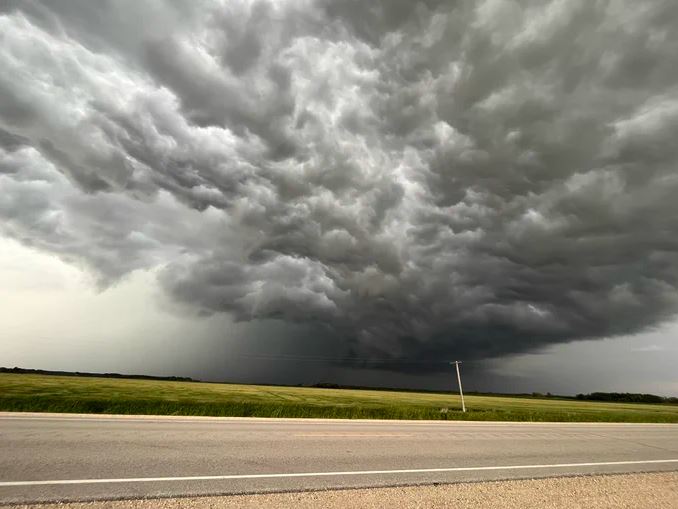Farmers struggling to get crops in the ground after floods
Posted June 7, 2022 7:19 pm.
Last Updated June 7, 2022 7:21 pm.
Flooding in southern Manitoba has been devastating to farms. The land around places like Morris, Manitoba would normally already be filled with canola crops, but right now it’s nothing but mud.
Farmers are working around the clock, trying to drain all the flood water that is stalling seeding. Lorne Hamblin and his team in Morris missed their deadline to sow soybeans now, they are trying to get canola in this muddy field by June 15.
“We should’ve seeded 15th of May and we are seeing now three weeks later, so we aren’t going to seed this by the weekend, so we need the rain to stay away if we are very lucky. We are a month behind,” said Hamblin.
Hamblin has 4,000 acres of farmland. 2,500 acres of that land was completely under water at the peak of the flood, with 90 acres still submerged by the red river. Like many other farmers, Hamblin will not be getting a full crop in this year.
“This loss is our dead loss. We don’t get paid for it, but maybe someday we should, because we are the holding pond.”
Ralph Groening, Reeve of Morris, says the damage inflicted from the flood will take months to recover from.
RELATED:
- Slow start to seeding driving concerns about crop yields in the Prairies
- More heavy rain, severe winds on the way for southern Manitoba
- Clean-up efforts underway in flood-stricken Peguis First Nation: ‘Everything is just gone’
“We’ve estimated that at this point, the cost recovery damages of $10 million in the RM of Morris, which is really significant. We will be working at this for most of the summer, but hopefully we could be finished this year,” said Groening.
Tons of debris, including mud and tree branches, litter most of the farmland in the Morris area. Groening is hoping that the cleanup is finished by October.
“The flood cleanup of 2022 is immense, it’s going to be huge. There is pressure right now in the farming community, but there will be work for us and contractors for the remainder of this year.”
Highway 75 – the major North/South route – has fully reopened to traffic after the Morris ring dike was closed due to high water levels. Dr. Barry Prentice, from the University of Manitoba, says the province needs to look to the future to avoid closing major arteries.
“I know there are plans to try and raise the road to a higher elevation to avoid the flooding and disruption, and of course, flooding also does affect the road itself. It affects the roadbed. It is a cost every year and now it’s just a matter of how long it takes to do it,” explained Prentice.
But Hamblin says the highway should’ve never been closed in the first place.
“It was closed for 25 days and the impact on the ag community, people accessing fertilizer in town, business in town, it should’ve never been closed because ethe design was to keep it open as long as I29 and that north-south trade corridor is open. The province has heard that message and that project should’ve been done a long time ago.”








